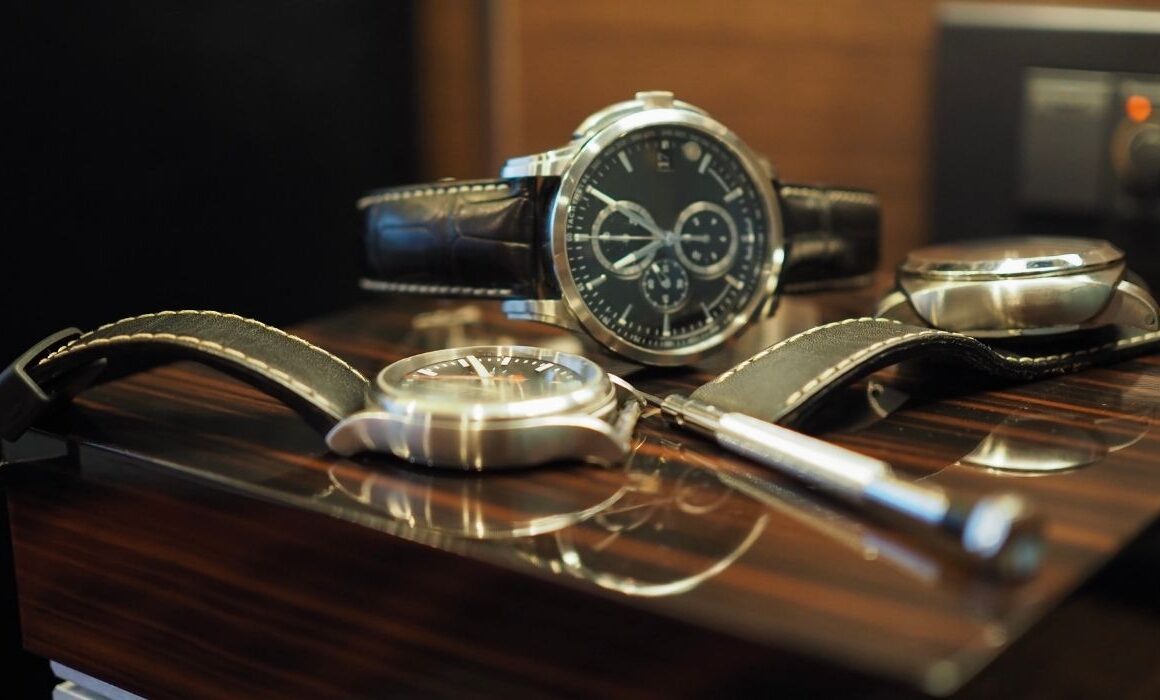Is Your Watch Too ‘Loud’ for the Boardroom? The Unspoken Rules of Power Watches.
In the world of high-stakes business, every detail matters. The cut of your suit, the shine on your shoes, the way you shake a hand—these are all part of the unspoken language of power and confidence. And nothing speaks this language more discreetly, or more powerfully, than the watch on your wrist. It’s a statement piece, a symbol of success, and a subtle nod to those who know.
But here’s the thing: a watch that’s perfect for a yacht party might be completely wrong for a crucial boardroom negotiation. There’s a fine line between a confident statement and a jarring distraction. The wrong watch, at the wrong time, can scream “insecure” or “tacky,” undermining everything you’ve worked for. The question isn’t just about what watch to wear; it’s about understanding the unspoken rules of what a “power watch” truly is in a professional context. It’s about nuance, not just brand names.
So, let’s stop talking about what you can afford and start talking about what you should wear.
Table of Contents
ToggleThe Three Degrees of “Loud”: What Makes a Watch Stand Out?
The concept of a watch being “loud” is more complex than a simple glance. It’s a multi-layered perception based on a watch’s aesthetics, its brand recognition, and its sheer financial value. An individual with a keen eye for detail will pick up on all three, and in a high-stakes corporate environment, you can be sure that someone is always paying attention. A truly successful “power watch” navigates this complexity with grace, making a statement that is recognized but never garish.
The Physical Loudness (Size & Bling)
This is the most obvious form of “loud.” A watch with an oversized case, a thick bracelet, or excessive bling and complicated dials immediately draws the eye, and not always for the right reasons. For most professional settings, a watch should be discreet enough to slip under a shirt cuff. A watch that sits on top of your cuff, due to its sheer size, can be seen as an unnecessary flex. While brands like Audemars Piguet and Richard Mille are known for their bold, recognizable designs, wearing one in a conservative corporate environment can be a risky move. In a boardroom, you want the focus to be on your ideas, not the shiny object on your wrist.
The Brand Loudness (Status & Recognition)
Some brands are so iconic that they are instantly recognized by everyone, from the intern to the CEO. A Rolex Submariner or a Cartier Tank are classics for a reason, but their very recognizability can be a form of loudness. In a company where salary and hierarchy are sensitive subjects, wearing a widely-known status symbol can be perceived as an intentional show of wealth. In contrast, wearing a watch from a brand that only a true connoisseur would recognize—like an A. Lange & Söhne or an F.P. Journe—is a much more subtle and sophisticated way to signal your knowledge and status. It’s a nod to those who truly understand horology, not just brand names.
The Price Loudness (The Dollar Figure)
This is the most uncomfortable type of “loudness” because it’s a direct reflection of your financial standing. While no one is going to ask you how much you paid, they can easily look it up. A watch with a six-figure price tag, worn in an environment where others are still climbing the ladder, can create a silent disconnect. It’s not about judging your success; it’s about understanding the psychology of the room. You want your colleagues and clients to feel comfortable and engaged with you, not intimidated by your choice of accessory.
The Unspoken Rules of Power Watches
Mastering the art of the power watch is about understanding context and culture. It’s about being strategic with your choices, not just grabbing the most expensive watch you own.
Matching the Corporate Culture
Before you wear that flashy timepiece, take a look at the people around you. What are they wearing? Is it a buttoned-up, conservative environment like a law firm or a traditional bank? Or is it a more relaxed, innovative tech startup? A tech CEO might be able to get away with a highly complicated, avant-garde watch, while a partner at a private equity firm would likely opt for a classic, understated dress watch. The key is to match the energy of the room. Your watch should fit in while still standing out as a mark of your personal taste and success.
The “Subtle Flex”
The most powerful watch in a boardroom is often not the loudest. It’s a watch that whispers, not shouts. A gold dress watch on a leather strap, like a classic Patek Philippe Calatrava, is a perfect example. It’s clearly a high-value timepiece, but its small size and elegant design make it an understated choice. It signals confidence without being arrogant. The true connoisseurs in the room will know what it is, and for everyone else, it simply looks like a beautiful, classic watch.
The Case for a “Business Beater”
In a world where you’re constantly traveling, shaking hands, and navigating busy environments, sometimes the best choice is to leave the most valuable watches at home. A robust, classic sports watch like a Rolex Explorer or an Omega Aqua Terra is a fantastic choice for professional travel. It is durable, versatile, and instantly recognizable as a high-quality timepiece without being overly ostentatious. It says you are a serious professional who values both style and practicality.
For a visual breakdown of watch sizes, materials, and how to pair them with different professional outfits, be sure to check out the video I’ve prepared on this topic. I’ll show you exactly how to find the perfect balance between style and substance.
The Final Word: Confidence is Your Best Accessory
Ultimately, the most important rule of the power watch is this: wear it with confidence. It’s not the price tag that makes a watch powerful; it’s the person wearing it. A watch, no matter how expensive, is only a tool to express who you are. The man who truly commands a room doesn’t need his watch to speak for him. He lets his words and his actions do the talking.
So, when you’re getting dressed for that big meeting, think about the message your watch is sending. Is it saying you are a successful, confident, and detail-oriented professional? Or is it simply shouting, “Look at how much money I spent”? The best choice is always the one that makes you feel powerful and in control, not the one that makes everyone else uncomfortable.



